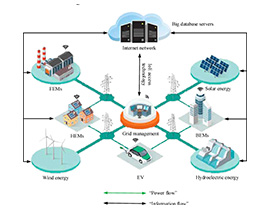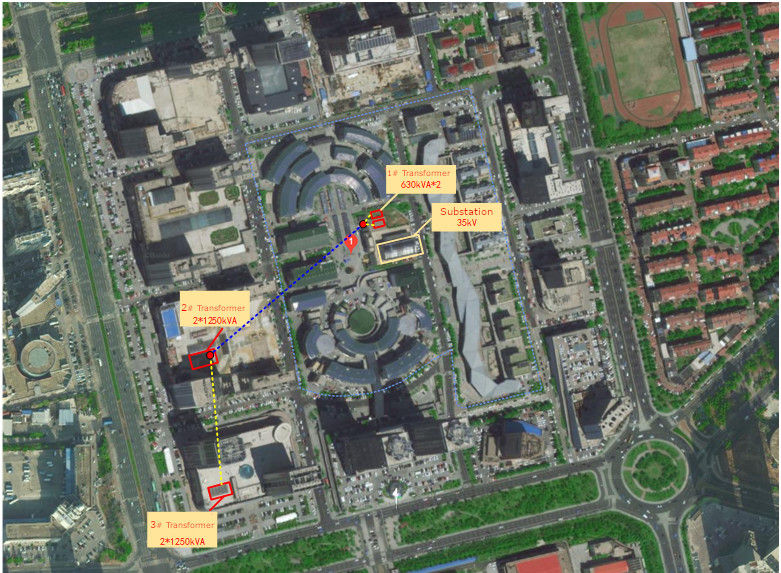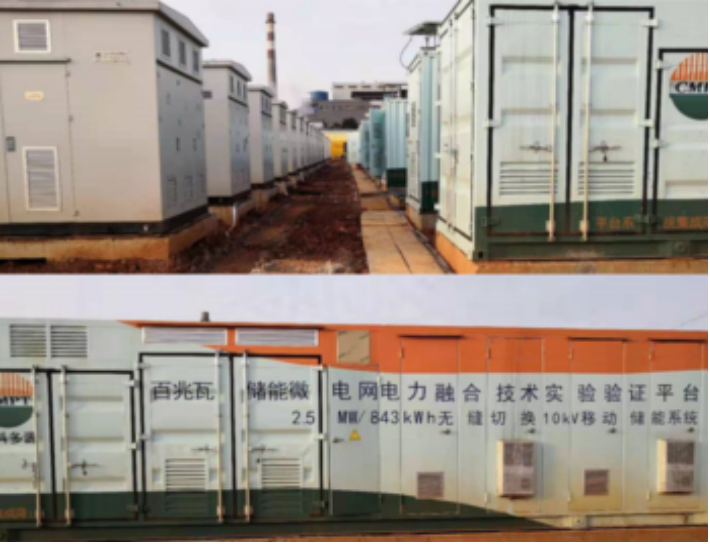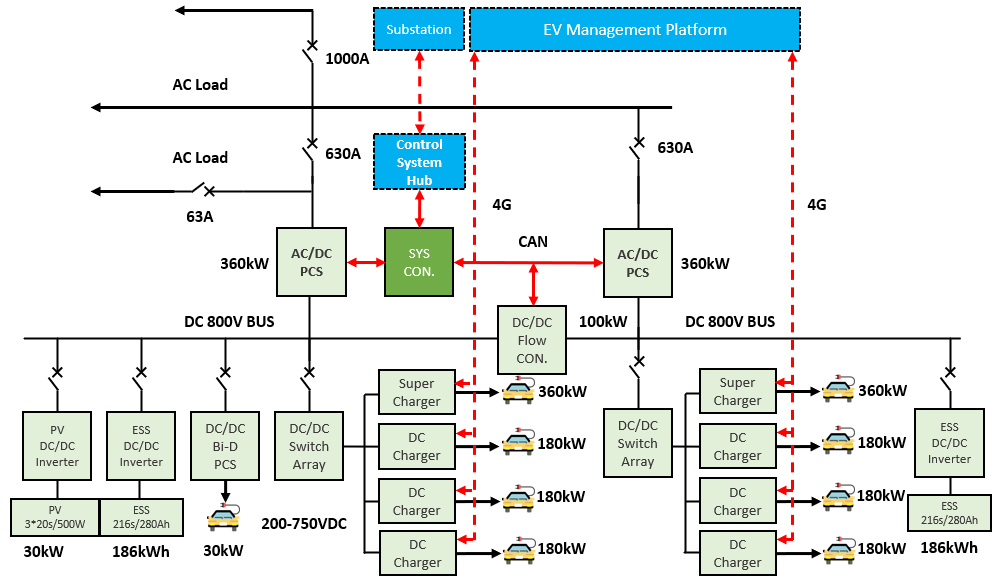Overview
Renewable energy generation, storage and DC loads have been growing significantly in recent years. It is recognised that such strong growth will last for years to come, as investments from government, commercial and private sectors are poured into the sector. However, challenges are also raised for seamless integration to the system. Firstly, the impacts brought into the existing distribution system by renewable energy e.g. PV penetration causes voltage fluctuation, rise, unbalance, harmonics, and islanding effects. These impacts not only cause power quality issue, but also affect system stability and integrity. The second issue is that generation of renewable energy falls out of the peak demand period. Hence better management and re-distribution are required, particular with more and more DC loads being brought into the system e.g. EV charging station and battery storage.
The RIZNER FDN Control System includes micro controllers, AD/DC & DC/AC energy routers, seamless switches and sensitive load switch-gear, etc. The DC FDN Control System (DC FDNCS) is the best solution available today to overcome the issues and maximize efficiency of the distributed renewable energy generation and storage.





Typical design of DC FDNCS
Features:
· Lowering and smoothing peak demands
· Anti-islanding and increasing local power network reliability
· Eliminating voltage rise, fluctuation, unbalance and harmonics
· Maximising efficiency for PV, EV charger and BESS
· Improving network operation to management of the network
· Enhancing reliability and capacity for interconnected DC networks
Specification and features:
· 415V (415/420) AC low voltage system
· 750VDC standard operating voltage, 650-800VDC operating range
· Bi-direction power flow controller
· Seamless soft switching for network (Optional)
· Interfaces for PV, BESS, EV charger and other DC loads
· Autonomous management for DC BUS, devices and network
· PV output adjustable from 0-100%
· Automatic system recover from network fault
· Inter-link-able cross sub-networks and self-balancing between systems
· Non power-off maintenance for local transformer
References:
While many projects have been delivered and being in services, below list 4 typical projects :
Project 1:
Eco city YCXF No.1 District Project for the State Grid
A residential district project. The first DC FDNCS project with integrated EV charger, BESS and PV interfaces, Tianjin. The system utilizes star-connection, DC bus and terminal interlink three different technologies.
Project 2:
Shandong Weihai Hanlefang - Multi-section DC FDNCS project

This system incorporating four transformers to achieve interlinked DC FDNCS. A 750V DC distribution line (1.3km) connected 1,400 houses with PV, BESS and DC EV chargers. This project achieved 100% PV usage of local generated power, as well as shifting peak loads.
Project 3:
Changde Institute for Integrated Energy Technology

The system services a testing and verification platform for ESS. It is based on the DC FDNCS platform, managing PV, ESS, EV DC charger and other AC/DC loads. Use energy router to achieving power re-distribution, controlled by grid demands, self-management, Off-grid mode.
Project 4:
State Grid - Beijing Yizuang Project

Large EV charging demands increase risk of overload. The project utilise multi-section interlink to create a micro grid. It comprising BESS to share capacity and increase reliability of the distribution networks. It demonstrates an effective solution of meeting rapid growth of EV charge demands in this area.
WeChat Account
Lin Zhou
Mobile: +86 137-3227-9578
Justin Xu
Mobile: +61 405-584-682
Office: U10/4-6 Edith Street, Mordialloc, VIC 3195 Australia







